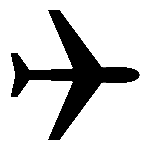Traffic information service – broadcast

Traffic information service – broadcast (TIS–B) is an aviation information service that allows pilots to see aircraft that are not emitting ADS-B data but have a basic transponder.
As aircraft are discovered by primary radar and respond with encoded altitude information, this information is broadcast over ADS-B. These near real time positions and ground tracks of other nearby aircraft are provided for the purpose of collision avoidance. It presents to the pilot a combined representation of aircraft positions derived from GPS satellite and ground-based radar data, specifically: aircraft's replies to ATC interrogations (i.e., they are responses to queries as sent to the aircraft from air traffic controller on the ground).[1][2]
TIS-B is broadcast to aircraft using both the 1090 MHz extended squitter (1090 ES) and the universal access transceiver (UAT) band of Automatic Dependent Surveillance–Broadcast (ADS-B).[3] Currently the service mainly benefits general aviation (GA) aircraft equipped with ADS-B "in" hardware by providing a traffic information relay to a screen in the cockpit.
At this time TIS–B is meant to be only a supplement to visual separation from other aircraft when operating in visual meteorological conditions (VMC) and as a backup to radar, which in remote areas only updates every 13 seconds, when operating under instrument flight rules (IFR).[4]
References
- ^ "Ins and Outs". faa.gov. 15 April 2022. Retrieved 18 June 2022.
To qualify as a TIS-B target, an aircraft must be equipped with a transponder, and be within radar coverage.
- ^ "AC 900114B Automatic Dependent Surveillance-Broadcast Operations" (PDF). faa.gov. 30 December 2019. Retrieved 18 June 2022.
2 TIS-B. TIS-B is the broadcast of transponder-based Mode C or Mode S traffic information derived from ATC surveillance systems. TIS-B provides ADS-B In-equipped aircraft with a more complete picture of surrounding traffic in situations where not all aircraft are equipped with ADS-B. An aircraft or vehicle that is ADS-B Out and is receiving TIS-B service is known as a TIS-B client. A non-ADS-B-equipped aircraft or vehicle that has its position transmitted in TIS-B reports is known as a TIS-B target. See paragraph 2.3.5 for TIS-B client qualification criteria.
- ^ "New Technology – ADS-B, TIS-B, and FIS-B" (PDF). FAA - Air Traffic Bulletin - Special. August 2005. Archived from the original (PDF) on 21 September 2012.
- ^ Tom Benenson (30 October 2005). "Mysteries of ADS-B - FLYING Magazine". FLYING Magazine. Retrieved 18 June 2022.
The uplink of non-ADS-B traffic is referred to as Traffic Information Service-Broadcast (TIS-B). Because the uplinked radar information is not as accurate as the ADS-B targets, the icon on the cockpit display for "degraded" non-ADS-B traffic looks a bit like a Pacman that's had a bite taken out of its backside; the ADS-B traffic is displayed as a chevron or arrow head pointing in its direction of movement.});
